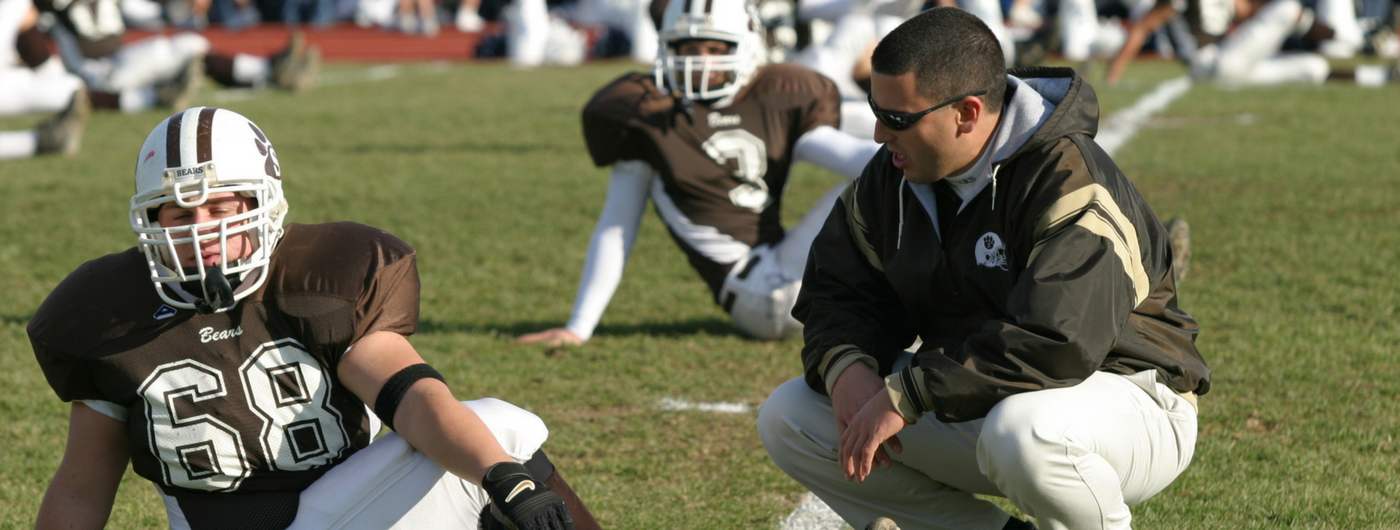Four reasons coaches should address dating violence
By Dale Lolley
Domestic violence. They are two words that elicit graphic images of bruises, broken bones and even deaths in our minds. Wouldn’t it be something if a future generation grew up without knowing what those words meant?
As a veteran reporter who has spent the better part of three decades working in newspapers, television and radio, I’ve been in a lot of newsrooms. Anyone who has spent even a few hours in a newsroom knows the lifeblood is its police scanner. Not a day goes by that police aren’t being called out to handle some form of domestic violence. It’s one of the reasons why, when I was looking to take a step back from the daily grind of the newspaper business, I wanted to work to implement the Coaching Boys into Men (CBIM) program.
Coaching Boys Into Men equips high school athletic coaches to help their male athletes build respectful relationships and prevent dating violence.
Sports have always been a main component of my life, whether it be participating, coaching or covering them. I’ve done one of those three since I could first walk. I understand the importance sports have in a young person’s life; how they can have a long-term impact. It’s something that made championing the Coaching Boys into Men program easy for me.
We have 25 school districts in Washington, Greene and Fayette counties, the area covered by Domestic Violence Services of Southwestern PA (DVSSP). My task when I accepted the position with DVSSP was to gain a foothold at those school districts. The question I had to ask was what was the best way to do so?
While dating and domestic violence prevention are critical parts of CBIM, they are also subjects which could cause some to shy away from implementing. In addition to discussing these important topics with coaches, I decided I would emphasize some other benefits of the program as well.
TEACHES PERSONAL RESPONSIBILITY
First is personal responsibility. Coaches preach this to their players every day. They want their players to be responsible young adults on and off the field. CBIM certainly raises that subject over and again as one of its central themes. Part of personal responsibility is knowing when you put on that uniform or join a team, you become part of something bigger than yourself. You now represent a school, a town, a city. Because of that, you have a duty to the other players, your coach, your family and community to do the right thing. When one player does something wrong, in the eyes of many, all the players have done so. They are all painted with the same brush, fairly or not.
WARNS ABOUT THE DANGERS OF SOCIAL MEDIA
Being responsible on social media was another aspect I emphasized. Most coaches can’t keep up with the trends in social media, a network of constantly changing channels that leaves many adults behind. As soon as we catch on to one new outlet, the kids have moved on to the next. And since we can’t monitor all the platforms, it’s best to help them realize they have to be thoughtful about what they decide to make public. They also have to be mindful of the verbiage they use when addressing each other in what they think is a private setting. I follow several athletes’ social media accounts for my job. It isn’t hard to find examples of some things that probably shouldn’t be placed in cyberspace. Starting that dialogue has been valuable to coaches and athletic directors.
GIVES STUDENTS THE SKILLS TO PREVENT BULLYING
An anti-bullying message also is part of my pitch. I explain to the coach when his star athlete – let’s say, Joey Bagofdonuts – walks down the hall, he has three choices on what to do if he witnesses something wrong happening. He can keep walking. He can stop and participate. Or, he can stop and tell the students that kind of behavior isn’t acceptable at this school. As star athletes, their actions in those situations speak volumes.
KEEPS ATHLETES ON THE SPORTS PAGES
Finally, my last point to coaches was they don’t want to be that school. You know, the one who has a star athlete charged with sexual assault, violence or, worse yet, murder. There are, unfortunately, plenty of examples to choose from because each and every one gets big headlines. That is my final point to the coaches. I tell them that it is my goal to keep their kids off the front page of the newspaper and on the sports pages, where they belong. While that is not necessarily the main purpose of CBIM, it is certainly a welcome effect of the program. And it is one every coach desires.
CBIM raises athletes’ awareness. It starts the dialogue in an easy-to-comprehend format that every coach can fold into programs they already have in place. It doesn’t matter the size of school, economic situation or sport. They are all messages we need to get out to our young athletes. To find out if your school is implementing Coaching Boys Into Men, and to request the program in your school, call 211.
Dale Lolley is a male engagement specialist at Domestic Violence Services of Southwestern Pa.

